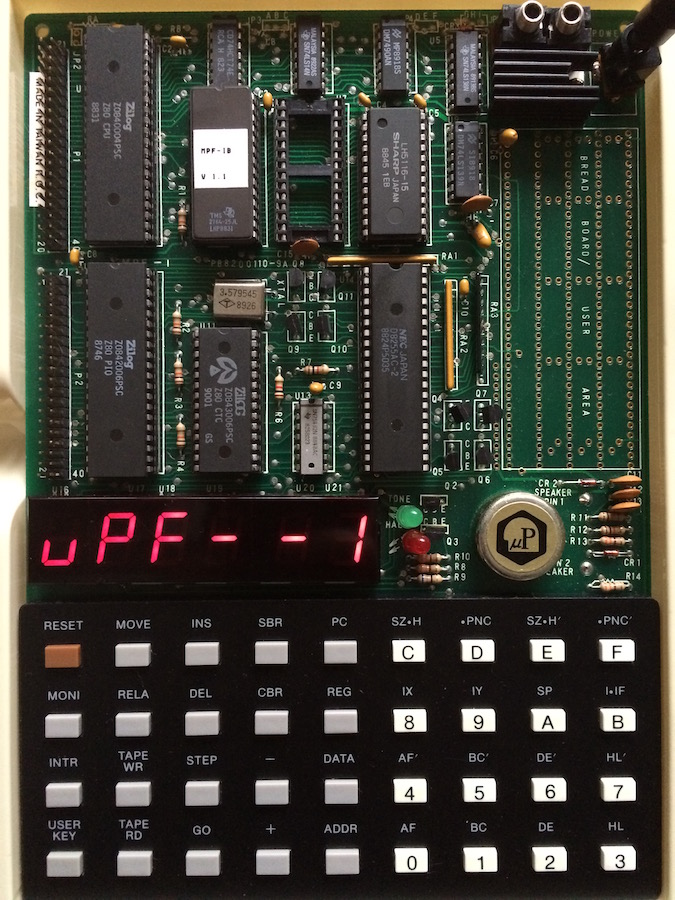Concert
Music for extinct computers
(Article from the Spor Festival website)
Six Danish composers and sound artists have come together to form the orchestra DCMC (Danish Computer Music Confederation), which basically deals with presenting live music encoded for extinct computers. The choice of these obsolete computers should not be understood only as a nostalgic look back to the composer’s childhood as they all grew up with this type of technology, but as a staging and study of the forgotten and neglected potentials inherent in these first home computers. The old and forgotten technological voices, which today has been removed from our consciousness, is brought to life again and tells us about a time when it was still possible to create remarkable and relevant computer music.DCMC consists of following members:
- Sandra Boss: Sound artist, composer, researcher.
- Jonas Olesen: Sound artist, composer.
- Søren Lyngsø Knudsen: Sound artist, composer.
- Mikkel Moir Pihl: Sound artist, composer.
- Jonas R. Kirkegaard: Sound artist, composer.
- Morten Riis: Sound artist, composer, researcher.
Three questions for DCMCWhat opportunities, qualities or restrictions do you think sound has as an artistic material?
Sound as a material has the advantage that it is in a constant negotiation between physical concreteness – and immaterial sensuality. We can’t see sound, but feel its effect on our bodies or observing it in our technological devices. This causes the creation of a field of tension between our expectation for a given aural event (for example, in the seconds before you put a record on a turntable, an act which exclusively relate to the sound’s physical representation of the plate material) and the actual auditory sensation where our perceptual apparatus kicks in and we are overwhelmed by sensory impulses that at once makes us forget the sound’s physical materiality – but at the same time it is tied to our knowledge and experience of sound in different (physical) situations (different speakers that behave in special ways, turntables spinning etc.). The interesting thing is that sound is not some defined situations, sound is impossible to outpoint directly, we can only observe or perceive its effect in something else. This is the sound greatest force, but at the same time also its greatest weakness because it obliges the artists, who have sound as their material, to work consciously with this sound duality. Sound is not just sound – but is sound for something – because of something – a relational structure that constantly challenge and expand composers and sound artists work – by constantly opening new opportunities to conceptualize and contextualize the retracted being of soundHow can it be, that when wanting to explore classical music traditions, it is often the staging, formats and surroundings that appears as changeable and not the music?
A premature answer will be that it is not possible to write more new music – that it on the other hand is only possible to place existing music into new contexts and constellations. But if you take the perspective from question #1 into the discussion, you will learn that because sound or music can not be reduced to either something that sounds immaterial in the air (and thus can be sensed) and can not be reduced to the symbolic score or computer program – it must conclusively mean that the proposed distinction between surroundings and music is not a valid premise to discuss what music is and will be in the future. Music does not unfold in predefined locations or time (different physical spaces, measurable mechanical temporality etc.). Music creates space and time, in cooperation with other objects (violins, speakers, people, dust on the plates). Various spaces and temporalities unfold, when notes and sounds are born of sounders and spread in the air, wood, metal, eardrums. The music is not to find in one particular place at a particular time, and therefore it is not valid to ask about the relationship between music/sound and context, since music is context as much as the environment is music.
With SPOR 2015s theme STAGING THE SOUND, the festival focuses on putting certain music practices up for discussion, especially those that exist around opera and music drama. In your experience, what happens when working with classical music in a more modern perspective – in general and in regards to your own artistic practice?
To take up the discussion from the previous questions the entire theme of the festival STAGING THE SOUND presents a paradox because it is trying to create a gap between the music-in-itself (and what is it that really in-itself? Is it the score? The idea? The movement of air molecules? Impulses from the eardrum to the brain?) and it’s performance or staging. To say that music can be a consistent size (which then can be staged), understood as either an artistic idea, a score, a media representation, will be an attempt to exhaust what music is. As described earlier, this is not possible because the music / sound are withdrawn – in the sense that we can not point to where it is, nor reduce it, as it always is something in relation to something else. Basically, there is no sound that can be detached from its surroundings or mediation; whether it is a physical space and a rotating plate or an electrical pulse in a microchip is subordinate. What is important in this context is that STAGING and SOUND are not two separate things, just like MUSIC and PRACTICE are not separate either. It’s all connected and cannot exist without each other. If you ask only for staging you forget that staging is just as much the sound as the sound is staging.
Spor Festival
Kunsthal Aarhus, Aarhus, DK 2015









